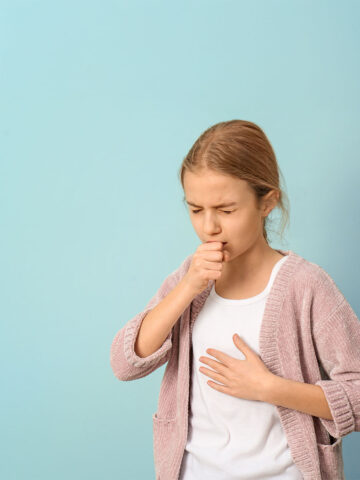Getting answers to questions about “walking pneumonia” or mycoplasma pneumonia
According to the U.S. Centers for Disease Control (CDC), cases of mycoplasma pneumonia – also known as “walking pneumonia” – have increased in the United States, especially among young children.
Here, CHOC pediatrician Dr. Amanda Salter offers advice and reassurance to parents about this common infection.
What is walking pneumonia?
Mycoplasma pneumonia, or walking pneumonia, is a less serious form of pneumonia, a lung infection. Typically, children with the condition don’t feel sick enough to stay home from school; hence the name “walking” pneumonia.
It is typically caused by a bacteria called mycoplasma pneumonia, but other bacteria or viruses can also cause it.
Who is affected by mycoplasma pneumonia?
While the infection can happen to anyone, it most often affects children ages 5 to 17 years old or young adults.
Why is there an increase in cases of walking pneumonia?
At this time, the medical community isn’t quite sure. One hypothesis is that younger children are encountering the bacteria for the first time following limited public interaction during the COVID-19 pandemic and have not yet built up immunity. Another possible explanation is that tests for the infection are better and more readily available.
What are the symptoms?
Here are symptoms to look for if you suspect your child has mycoplasma pneumonia:
- a fever of 101°F or above
- a cough that can last for weeks to months
- fatigue
- headache, chills, sore throat, and other cold- or flu-like symptoms
- fast breathing or breathing with grunting or wheezing sounds
- labored breathing that makes the rib muscles retract
- ear pain
- chest pain or stomach pain
- malaise
- vomiting
- loss of appetite (in older kids) or poor feeding (in infants)
- rash
- joint pain
The types of symptoms someone can experience typically depends on where the infection concentrates in the body. An infection in the top or middle part of the lungs can cause labored breathing. An infection in the lower lungs near the belly might cause upset stomach, nausea or vomiting, but not affect breathing.
How do walking pneumonia symptoms differ from a cold or other respiratory infection?
The primary difference between a typical cold and walking pneumonia is the duration of the child’s symptoms. If a child has a cold that persists longer than 10 days, especially if a cough is worsening or not going away, they might have walking pneumonia.
What does a walking pneumonia cough sound like?
Because a child’s symptoms may vary, including based on where the infection lies in the body, a cough might not necessarily be present. The cough can be wet or dry, but usually wakes a child from sleep.
When diagnosing walking pneumonia, pediatricians will listen to a child’s breathing for a crackling sound. Sometimes it is difficult to tell from an exam if the pneumonia is due to mycoplasma or a different organism and your doctor may need to change the antibiotic. Children should go back to the office in 48 hours if the symptoms are not getting better with the current treatment.
When should I seek medical attention if I suspect my child has walking pneumonia?
Families should contact their pediatrician if the child’s symptoms persist or worsen, or if they have difficulty breathing. Children with compromised immune systems are at increased risk of developing complications, so they should be watched carefully.
How can I prevent my child from getting walking pneumonia?
While there is no vaccine against the infection, it’s always recommended that children receive their annual influenza and COVID-19 vaccines. This will help prevent co-infections with these conditions, which are also circulating this time of year and can be dangerous if contracted at the same time.
Additionally, children should be encouraged to wash their hands frequently and cough or sneeze into tissues or their elbows to prevent the spread of all respiratory illnesses.
Call CHOC’s free 24/7 Nurse Advice Line
Our free nurse helpline is open 24/7 to address questions about your child’s health.





